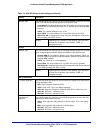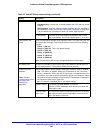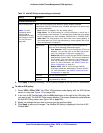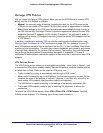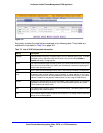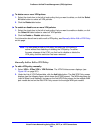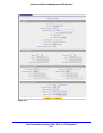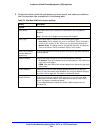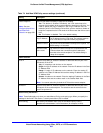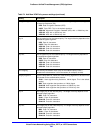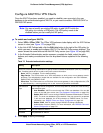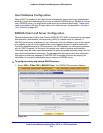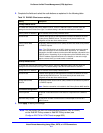
Virtual Private Networking Using IPSec, PPTP, or L2TP Connections
304
ProSecure Unified Threat Management (UTM) Appliance
3. Complete the fields, select the radio buttons and check boxes, and make your selections
from the drop-down lists as explained in the following table:
Table 74. Add New VPN Policy screen settings
Setting Description
General
Policy Name A descriptive name of the VPN policy for identification and management
purposes.
Note: The name is not supplied to the remote VPN endpoint.
Policy Type From the drop-down list, select one of the following policy types:
• Auto Policy. Some settings (the ones in the Manual Policy Parameters
section of the screen) for the VPN tunnel are generated automatically.
• Manual Policy. All settings need to be specified manually, including the
ones in the Manual Policy Parameters section of the screen.
Select Local Gateway
(multiple WAN port
models only)
Select a WAN interface from the drop-down list to specify the WAN interface for
the local gateway.
Remote Endpoint Select a radio button to specify how the remote endpoint is defined:
• IP Address. Enter the IP address of the remote endpoint in the fields to the
right of the radio button.
• FQDN. Enter the FQDN of the remote endpoint in the field to the right of the
radio button.
Enable NetBIOS? Select this check box to allow NetBIOS broadcasts to travel over the VPN
tunnel. For more information about NetBIOS, see Configure NetBIOS Bridging
with IPSec VPN on page 330. This feature is disabled by default.
Enable RollOver? Select this check box to allow the VPN tunnel to roll over to the other WAN
interface when the WAN mode is set to Auto-Rollover and an actual rollover
occurs. This feature is disabled by default.
For the multiple WAN port models only: Select a WAN interface from the
drop-down list.




